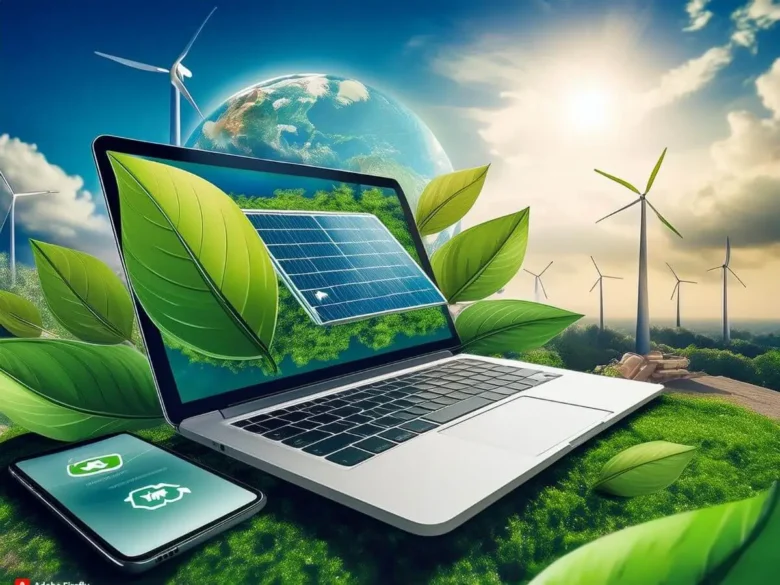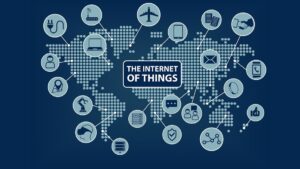By employing these eco-friendly gadgets, you can reduce energy usage and thus decrease utility bills. These products, which range from smart thermostats to energy use apps, cater to both comfort and cost-effectiveness. These smart devices help you conserve energy by sensing when you are home or away and automatically adjusting. In addition, they monitor appliances and alert users of potential energy drainers like kitchen waste.
1. Smart Thermostat
With rising energy rates, many consumers are searching for ways to cut back their home electricity costs, and one effective solution is implementing a smart thermostat.
These devices go beyond typical programmable thermostats by eliminating human intervention in managing heating and cooling schedules. With advanced features like geofencing and satellite sensors, these gadgets optimize energy usage without the need to manually program every day. Smart thermostats offer many advantages, including 24/7 remote access and control, learning capabilities, real-time energy usage reports, and much more. Explore Carrier’s selection of smart thermostats today!
2. LED Bulbs
Light bulbs are an excellent place to begin saving energy, with LEDs using much less electricity to provide equal levels of lighting while lasting much longer than traditional incandescent or CFL bulbs.
Smart bulbs such as Kogan SmarterHome models provide more control of your home lighting with features such as color changes and scheduling. Although LEDs may cost more initially, they ultimately save money through reduced maintenance expenses and electricity consumption. Be sure that the LEDs you purchase are suitable for brightness and your room’s desired hues. Their packaging should indicate how many lumens (a measure of brightness) and Kelvin are included on them.
3. Smart Plugs
Smart plugs are devices designed to convert traditional home devices into smart home devices. Equipped with wireless technology and user-friendly setup procedures, smart plugs provide an efficient means of automating home appliances while cutting energy usage costs.
Some smart plugs feature energy monitoring capabilities that enable consumers to keep an eye on the electricity consumption of connected devices and make more informed decisions regarding energy use and usage—potentially saving on electricity bills while decreasing carbon footprint. Look for a smart plug with an attractive, compact form factor that won’t obstruct other outlets, as well as one from a brand that supports your desired smart home protocol, such as Alexa, Google Assistant, or HomeKit.
4. Smart Light Switches
Smart light switches resemble traditional light switches or dimmers in appearance and offer greater control than regular bulbs alone. You can set schedules or connect your light switch to other smart home devices through apps or voice control.
Smart switches with wireless functionality provide convenient connections between bulbs and gadgets. Installation in homes with existing wiring requires simply turning off power at the fuse box and taking out and installing the new switch in its place; for those unsure, professional electrician services may be more suitable than doing this themselves.
5. Smart Thermostat Apps
Heating and cooling account for most of our energy use, making smart thermostats controlled from your smartphone an efficient way to reduce costs. Ecobee offers features like occupancy detection that help lower energy use in rooms when nobody is present—this lowers temperatures automatically!
These apps also track carbon units, making it easy to understand the impact of your daily activities on your carbon footprint. Oroeco makes competition among friends and family for meeting carbon-offsetting goals more exciting! Gexa Energy offers an array of energy plans that include free Smart Thermostats by Carrier with smart features like geofencing and energy usage reporting. Discover these plans today, by Gexa Energy!
6. Smart Appliances
Smart appliances can help lower energy costs and make an impactful statement about how energy efficient your home is. Budget-friendly devices, like ENERGY STAR certified smart light bulbs and plugs, can be combined with voice assistants to set schedules or control products based on time of day or location for added convenience.
Many smart appliances include features to increase energy efficiency, such as optimizing settings, sensors, and scheduling options. You can use this technology to set your coffee maker to start brewing as soon as you wake up or to preheat the oven before leaving for work.
7. Energy Monitoring Devices
Due to rapidly increasing electricity rates across most of the U.S., it’s imperative that energy users reduce their use. Energy monitoring devices—or power monitors—make this easy by identifying which appliances use up the most electricity and providing cost information about them.
Devices such as Sense (link is external), formerly known as Schneider’s Wiser energy monitor, attach directly to an electrical panel or box and identify which appliances are using up the most energy. They then provide recommendations for ways to decrease consumption and track savings over time—further supporting sustainability goals and decreasing environmental impacts.
8. Smart Thermostats
Heating and cooling account for a significant portion of home energy use, so smart thermostats (such as Nest, ecobee or Sensi) can drastically cut back electricity bills. Their advanced capabilities such as learning, scheduling, geofencing and room sensors allow these thermostats to only heat or cool those parts of your house that actually need it.
Discover a smart thermostat that integrates seamlessly with other connected devices and applications (IFTTT or Matter) while being compatible with your existing home system. Some utilities offer rebates to reduce upfront costs associated with these smart products – speak to your utility provider to find out which programs may be available in your area.
9. Smart Appliances
Smart appliances can bring life-enhancing convenience and savings for homeowners, whether looking to cut expenses or create an appealing living environment. Many include energy-saving features like optimized settings and scheduling options as well as sensors which give insight into usage habits as well as automate routine tasks.
Some smart appliances can be controlled easily with voice assistants like Amazon Echo, Google Home and Alexa to make them even simpler to use. Others, like smart plugs that cut power when devices are no longer being used can reduce energy waste significantly – for instance starting your oven or washer/dryer remotely and scheduling them for off-peak hours could save significant energy costs.




